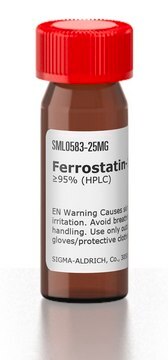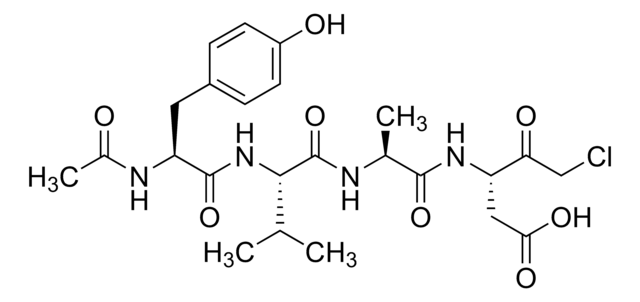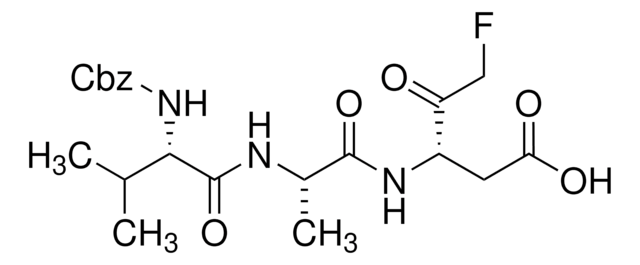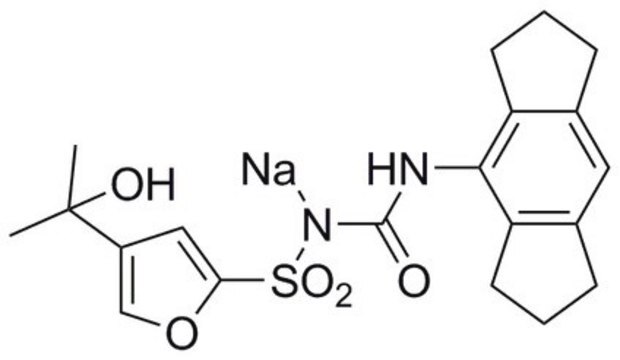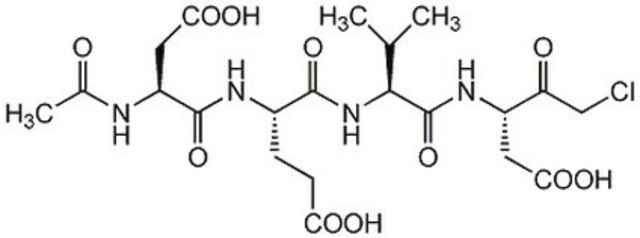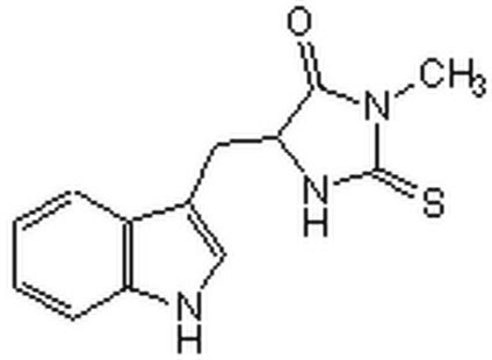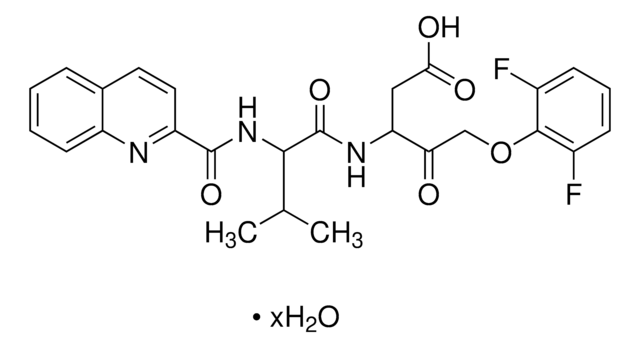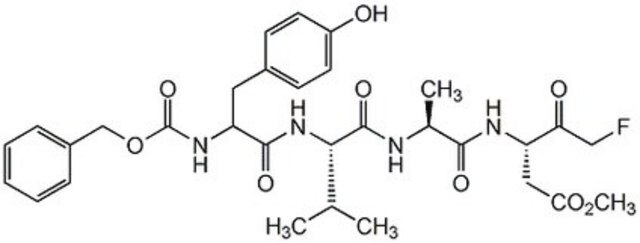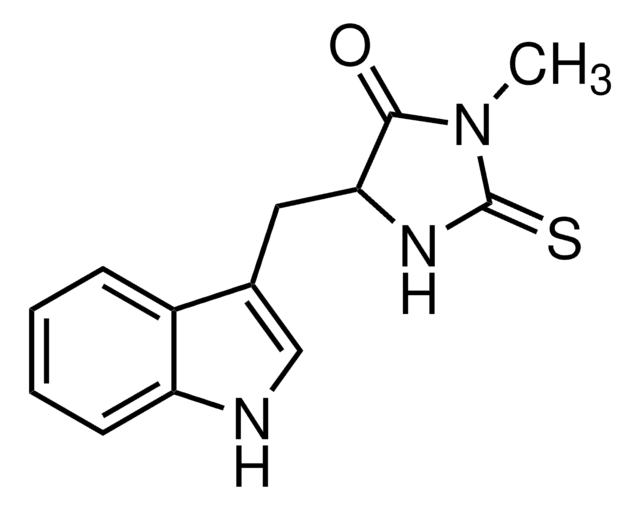627610
Z-VAD-FMK
Single spot by TLC, solid, Caspase inhibitor, Calbiochem
Synonym(s):
Caspase Inhibitor I, Z-VAD (OMe)-FMK
About This Item
Recommended Products
product name
Caspase Inhibitor I, Z-VAD-FMK, CAS 187389-52-2, is a cell-permeable, irreversible, pan-caspase inhibitor.
Quality Level
form
solid
manufacturer/tradename
Calbiochem®
storage condition
OK to freeze
desiccated
color
white
solubility
DMSO: 50 mM
shipped in
ambient
storage temp.
−20°C
InChI
1S/C22H30FN3O7/c1-13(2)19(26-22(31)33-12-15-8-6-5-7-9-15)21(30)24-14(3)20(29)25-16(17(27)11-23)10-18(28)32-4/h5-9,13-14,16,19H,10-12H2,1-4H3,(H,24,30)(H,25,29)(H,26,31)/t14-,16-,19-/m0/s1
InChI key
MIFGOLAMNLSLGH-QOKNQOGYSA-N
General description
Biochem/physiol Actions
Fas-mediated apoptosis in Jurkat cells and staurosporine-induced cell death in corneal epithelial cells
Warning
Sequence
Reconstitution
Analysis Note
Other Notes
Martin, U., et al. 2007. Apoptosis12, 525.
Misaghi, S., et al. 2004. Chem. Biol.11, 1677.
Joo, C., et al. 1999. Ophthalmic Res. 31, 287.
McColl, K.S., et al. 1998. Mol. Cell. Endocrinol. 139, 229.
Thornberry, N.A. and Lazebnik, Y. 1998. Science 281, 1312.
Tolomeo, M., et al. 1998. Cell Death Differ. 5, 735.
An, S. and Know, K.A. 1996. FEBS Lett.386, 115.
Cain, K., et al. 1996. Biochem J.314, 27.
Mirzoeva, O.K., et al. 1996. FEBS Lett.396, 266.
Pronk, G.J., et al. 1996. Science 271, 808.
Slee, E.A., et al. 1996. Biochem. J.315, 21.
Chow, S.C., et al. 1995. FEBS Lett. 364, 134.
Fearnhead, H.O., et al. 1995. FEBS Lett. 375, 283.
Zhu, H., et al. 1995. FEBS Lett.374, 303.
Legal Information
WGK
WGK 3
Flash Point(F)
Not applicable
Flash Point(C)
Not applicable
Certificates of Analysis (COA)
Search for Certificates of Analysis (COA) by entering the products Lot/Batch Number. Lot and Batch Numbers can be found on a product’s label following the words ‘Lot’ or ‘Batch’.
Already Own This Product?
Find documentation for the products that you have recently purchased in the Document Library.
Customers Also Viewed
Our team of scientists has experience in all areas of research including Life Science, Material Science, Chemical Synthesis, Chromatography, Analytical and many others.
Contact Technical Service

